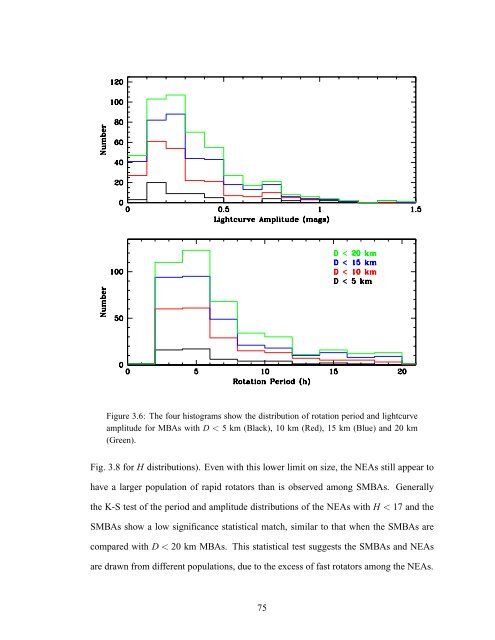Forming Binary Near-Earth Asteroids From Tidal Disruptions
Forming Binary Near-Earth Asteroids From Tidal Disruptions
Forming Binary Near-Earth Asteroids From Tidal Disruptions
You also want an ePaper? Increase the reach of your titles
YUMPU automatically turns print PDFs into web optimized ePapers that Google loves.
Figure 3.6: The four histograms show the distribution of rotation period and lightcurveamplitude for MBAs with D < 5 km (Black), 10 km (Red), 15 km (Blue) and 20 km(Green).Fig. 3.8 for H distributions). Even with this lower limit on size, the NEAs still appear tohave a larger population of rapid rotators than is observed among SMBAs. Generallythe K-S test of the period and amplitude distributions of the NEAs with H < 17 and theSMBAs show a low significance statistical match, similar to that when the SMBAs arecompared with D < 20 km MBAs. This statistical test suggests the SMBAs and NEAsare drawn from different populations, due to the excess of fast rotators among the NEAs.75












